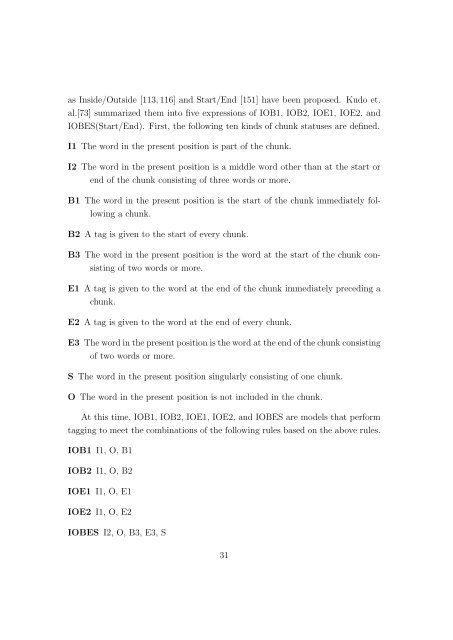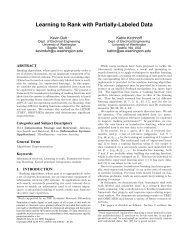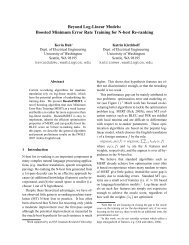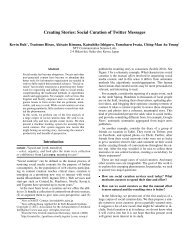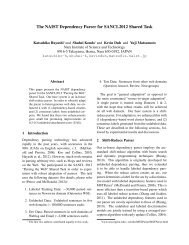file - ChaSen - 奈良先端科学技術大学院大学
file - ChaSen - 奈良先端科学技術大学院大学
file - ChaSen - 奈良先端科学技術大学院大学
- No tags were found...
You also want an ePaper? Increase the reach of your titles
YUMPU automatically turns print PDFs into web optimized ePapers that Google loves.
as Inside/Outside [113, 116] and Start/End [151] have been proposed. Kudo et.al.[73] summarized them into five expressions of IOB1, IOB2, IOE1, IOE2, andIOBES(Start/End). First, the following ten kinds of chunk statuses are defined.I1 The word in the present position is part of the chunk.I2 The word in the present position is a middle word other than at the start orend of the chunk consisting of three words or more.B1 The word in the present position is the start of the chunk immediately followinga chunk.B2 A tag is given to the start of every chunk.B3 The word in the present position is the word at the start of the chunk consistingof two words or more.E1 A tag is given to the word at the end of the chunk immediately preceding achunk.E2 A tag is given to the word at the end of every chunk.E3 The word in the present position is the word at the end of the chunk consistingof two words or more.S The word in the present position singularly consisting of one chunk.O The word in the present position is not included in the chunk.At this time, IOB1, IOB2, IOE1, IOE2, and IOBES are models that performtagging to meet the combinations of the following rules based on the above rules.IOB1 I1, O, B1IOB2 I1, O, B2IOE1 I1, O, E1IOE2 I1, O, E2IOBES I2, O, B3, E3, S31


